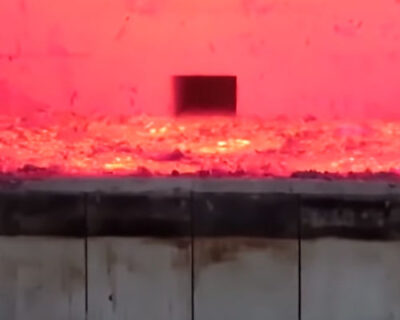Aluminum alloy liquid degassing of hydrogen can use the adsorption effect of refining agent to achieve the effect of removing oxidized impurities and gas. Inert gas refers to a gas that does not react with molten aluminum and molten hydrogen, and does not dissolve in molten aluminum, usually refers to nitrogen and argon.
According to the principle of aluminum alloy liquid adsorption and slag removal, many small bubbles will be formed after nitrogen is blown into the aluminum liquid. The bubbles meet the oxide inclusions in the molten aluminum, and the inclusions are adsorbed on the surface of the bubbles and float to the surface of the molten aluminum with the bubbles. The oxides that have been brought to the surface of the molten aluminum cannot automatically break away from the oxygen and re-dissolve in the liquid, and stay on the surface of the molten aluminum to gather and remove.

Since inert gas purging occurs at the interface between bubbles and molten aluminum, only a limited amount of melt can be contacted, and the slag removal effect of molten aluminum is limited. In order to improve the purification effect, the more bubbles produced by blowing in the refined gas, the smaller the bubble radius, the more uniform the distribution, and the longer the blowing time, the better the degassing effect.
The degassing of hydrogen is based on the principle of partial pressure difference degassing. Because there is a difference in the equilibrium partial pressure difference between the bubble and the aluminum liquid in the nitrogen bubble, the hydrogen dissolved in the metal continuously diffuses into the bubble. This process will not stop until the partial pressure of hydrogen in the bubble is equal to the equilibrium partial pressure of hydrogen in the molten aluminum. After the bubbles rise to the surface, the hydrogen in the bubbles also escapes into the atmosphere. Therefore, both oxidized inclusions and argon are brought out during the rise of the bubble. The temperature of the argon gas should be controlled at 710-720℃ to avoid the formation of aluminum nitride from the reaction of hydrogen and molten aluminum.

